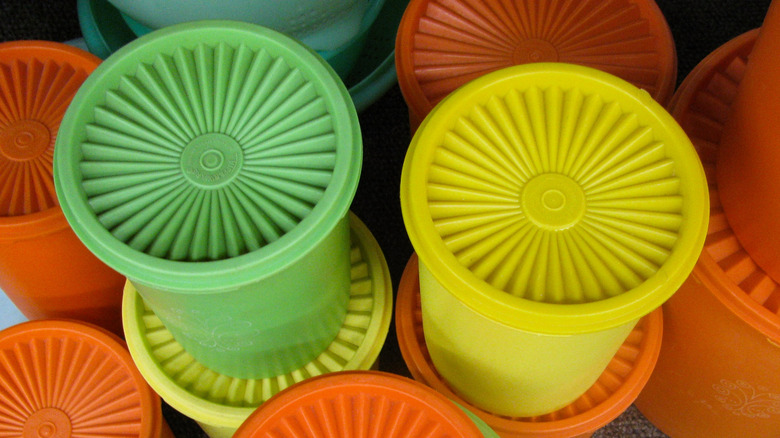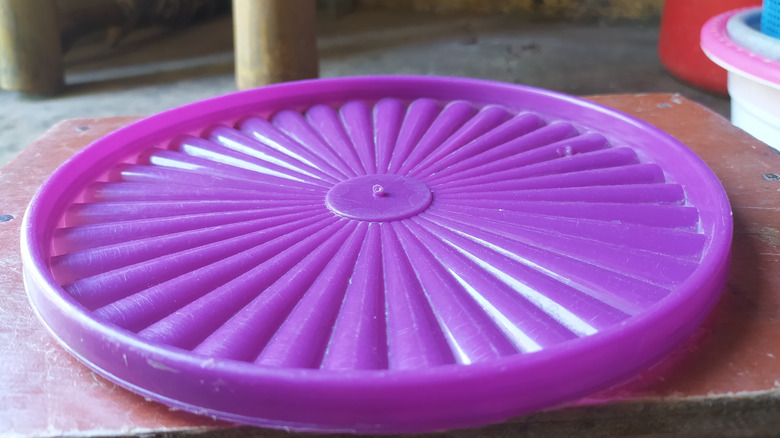Why You Should Think Twice Before Using Your Grandma's Vintage Tupperware
Vintage Tupperware is charming and functional, coming in adorable designs throughout the decades and a wide range of sizes. These pastel pink and avocado green containers have become iconic, along with their sunburst lids. They add a pleasant touch of nostalgia to your kitchen and they're valuable as collectors' items, but you probably shouldn't put any food in them. It actually may be time to ditch all your plastic food containers for good, and all for the same reason -– they could leach health-harming chemicals and microplastics into the food stored inside.
Any type of Tupperware made before March 2010 should just be for decoration. Up until 2010, the containers were made with a chemical called BPA (bisphenol-A). The European Union banned BPAs in 2024, but it's still used in the U.S., though with restrictions and government oversight. It's in all kinds of polycarbonate plastics that many of us use every day like food storage containers, water bottles, and the linings of aluminum cans -– and chronic exposure can cause a whole host of problems like endocrine disruption, neurological and fertility issues, and metabolic disruption. Plus, BPA has been linked to developmental delays in children and to an increased risk of developing cancer. BPA is just the beginning of the toxins that could be in your grandma's vintage Tupperware, especially if you study the fascinating history of Tupperware and realize its roots in World War 2 military waste. Inside that beautiful plastic container could also be lead, arsenic, mercury, and calcium.
How do I know if my Tupperware contains BPA and does that mean it's toxic?
In the U.S., BPA usage is regulated by the Food and Drug Administration (FDA) and the Environmental Protection Agency (EPA). Neither organization has flat-out said BPA is toxic for humans at the levels present in food containers, but experts have been doing toxicity tests and studies on health impacts of the chemical for decades. Results of those studies have led to regulation of BPA in products, as well as labeling, so you'll know if your plastic containers are made with the chemical. Look for labels that indicate plastic is BPA-Free when you're shopping for new food storage containers. Search for other signs of the presence of BPA in vintage Tupperware, like a number printed on the bottom of the container.
If your vintage Tupperware was made before 2010, you don't have to do any more investigating: it was definitely made with BPA. Discover the age of your Tupperware by inspecting mold numbers, logo and branding, color and design, and stamped codes that indicate the date it was made (here's what the different Tupperware symbols actually mean). Anything made after 2010 requires a second look to figure out if it was made with BPA. Inspect the canister for the number 3 or the number 7 printed on the bottom. Those numbers signify polycarbonate plastics and plastics made with PVC, and both generally contain BPA.

